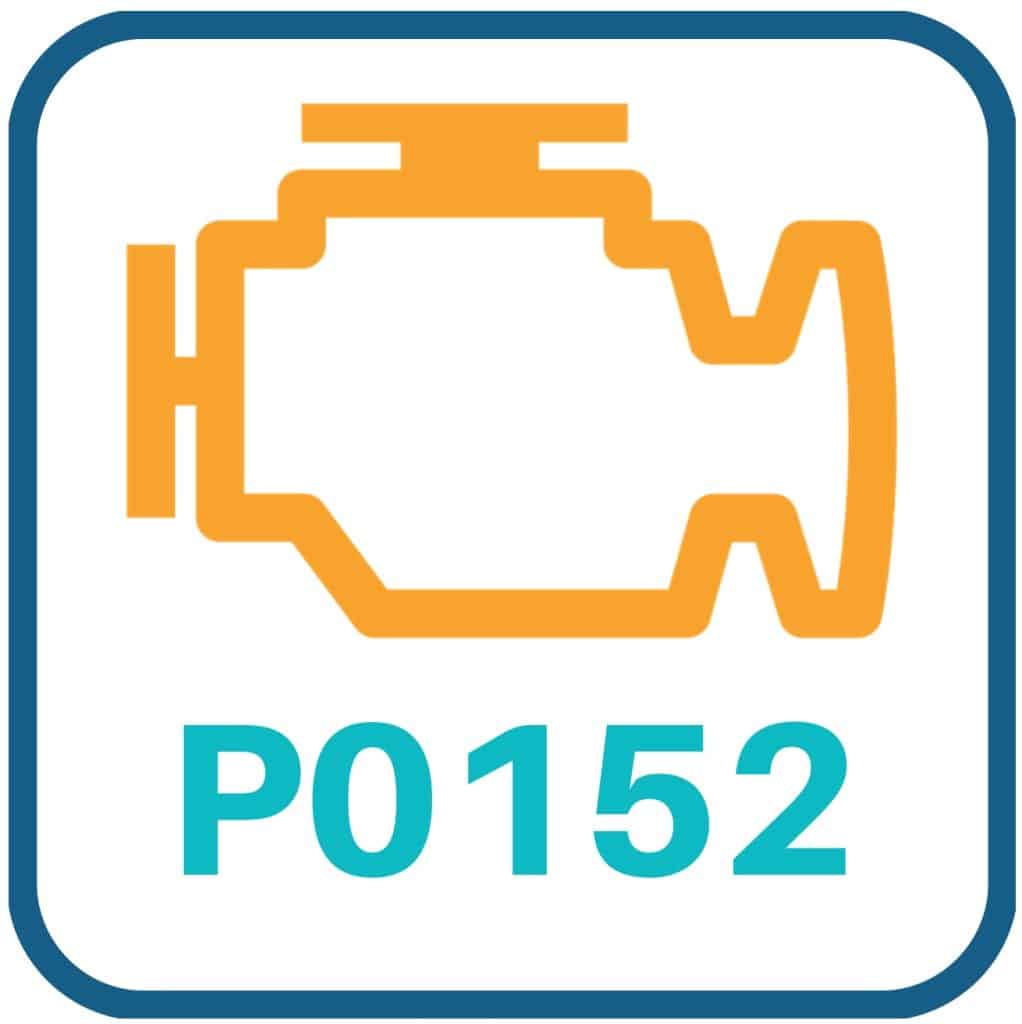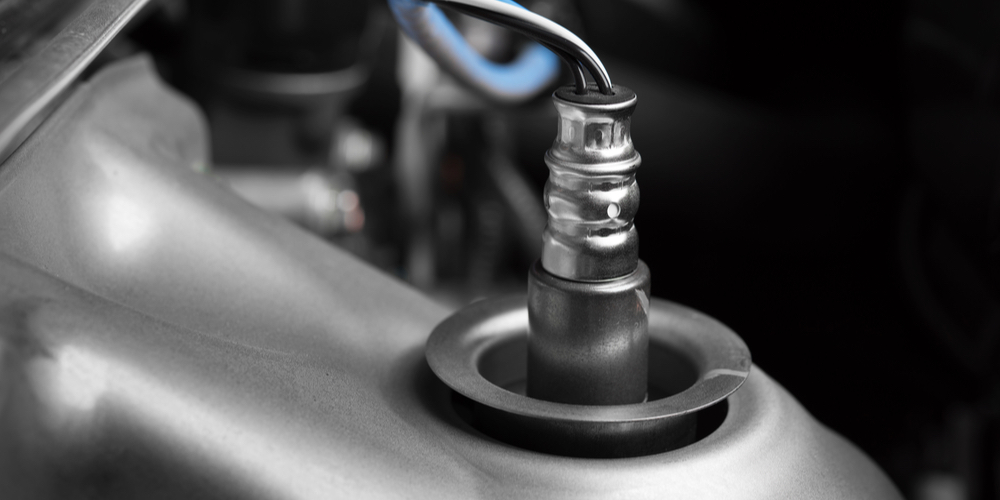
P0152 is a common OBDII code that occurs in many vehicles, including the Volkswagen Beetle. It indicates that the bank 2 sensor 1 O2 sensor is reporting a voltage level that is higher than its normal operating range.
P0152 Definition: O2 Sensor – High Voltage – B2S1

O2 Sensor
Oxygen sensors are responsible for metering the exhaust as it exits the engine. This allows the PCM (Powertrain Control Module) to adjust the air/fuel ratio constantly, which helps your Beetle’s engine run at optimum efficiency.
High Voltage
P0152 is triggered when your Beetle’s PCM detects the following conditions:
- The voltage at the B2S1 O2 sensor remains above the voltage threshold for 20 seconds or more.
- The air-fuel sensor stays in rich biased mode for too long.
There are also some less likely problems that can cause P0152. We’ll go over those below.
Bank 2 Sensor 1
- Bank 2 is the side of the engine with the second cylinder.
- Sensor one is the first sensor in line as the exhaust leaves the head. It’s on or right after the exhaust manifold.
Volkswagen Beetle P0152 Symptoms
If your Beetle has P0152, there are usually noticeable symptoms. They include:
- Rough running engine
- Smelly exhaust
- Service engine soon light on
- Poor MPG
Most of the time, it’s not a breakdown risk. But, like anything that causes the service engine soon light to come on, it is a good idea to have it fixed as soon as possible. A poor air fuel mixture going through the catalytic converter can damage it.
Volkswagen Beetle P0152 Causes
Here are the most common issues that cause the P0152 code in the Volkswagen Beetle. They are presented in order (somewhat) from most to least likely to cause the problem.

- Bad Oxygen Sensor– The O2 sensor itself is one of the most likely reasons that P0152 is triggering your service engine soon light. Although it is a temptation to replace it right away, it wouldn’t hurt to check out the wiring harness around it beforehand.
- Wiring Harness Issues- The wiring that goes to the front and rear oxygen sensors is very susceptible to damage. This is due to the fact that O2 sensors are under the chassis, where they are subject to punishment from road debris, and exhaust heat. Here’s how to find a short in the wiring harness (Youtube).
- Damage to the Terminal– The terminal that the oxygen sensor connects to (the plug) is also relatively susceptible to damage. You’ll want to make sure that there is voltage going to it. There’s more on that directly below.
- Wrong O2 Sensor– If you are getting P0152 after having recently replaced your Oxygen sensor, it may be that the replacement is wrong or bad.
Beetle P0152 Diagnosis
Here is a fantastic video that covers all aspects of diagnosing the P0152 code:
Swap Test (Easy to Do At Home With Simple Tools)
You can perform the swap test by swapping the bank 1 and bank 2 oxygens sensors. Clear the code and see if it changes to P0132 (the bank 1 side of this code). If it does, you need to replace the oxygen sensor that was just swapped from bank 2.
Using a Multimeter
This video is for P0132, but is completely relevant for P0152
It is possible to diagnose the P0152 with a multimeter. If you use the multimeter, you’ll know whether or not the voltage coming to and from the oxygen sensor is within spec, this can help you determine if it’s your Beetle’s O2 sensor or wiring harness that’s the issue.
If you don’t have access to a multimeter, it certainly wouldn’t hurt to check the wiring to between the fuse box and the Oxygen sensor first. If it ends up being a wiring issue, it’ll save you money over buying an unnecessary O2 sensor.
You can also use a voltage test light to determine whether or not the oxygen sensor is getting any voltage at all (they’re about $5 at Walmart).
If it’s not getting any voltage, attach the test light to the harness plug and shake the wiring a little bit. If the light comes on, even for a second, you know that you have a short circuit causing the P0152 trouble code.
Conclusion
Good luck finding whatever caused P0152 in your Volkswagen Beetle. It’s usually caused by a bad O2 sensor. Since there are two “banks”, you can use the swap test for a quick and easy diagnosis.
